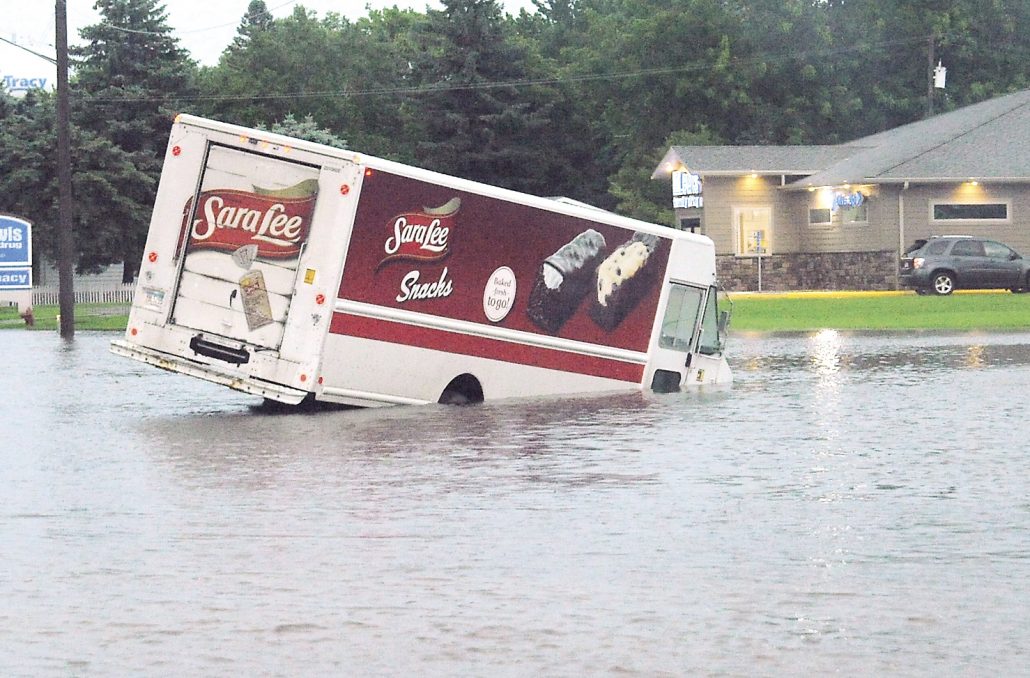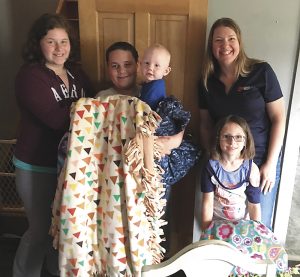
The July 3, 2018, flood is still fresh in the minds of city officials
By Per Peterson
In about the time it takes to drive from Tracy to Minneapolis, 9 inches of rain fell in Tracy one year ago today. In all, nearly 12 inches of rain was dumped on the town, causing severe flooding. To add sewage to injury, because Tracy’s sewer system couldn’t handle all that rain during that short window of time, numerous residents not only dealt with rising floodwaters, but raw sewage in their basements as well.
“There was a 20% chance of rain that night,” recalls Tracy Public Works Director Shane Daniels. “It wasn’t supposed to rain.”
But rain it did, and the result was flooding in and around Tracy. No town was spared the relentless deluge, but in Tracy, things were worse when the sanitary sewer became overloaded and failed.
“The ground was already saturated at that time last year, then you add that immediate event — it just became unbearable,” City Administrator Kris Ambuehl said.
Daniels remembers how widespread the impact was — from foundations being under water, to manholes being under water.
“All that water completely engulfed the sanitary sewer system,” he said. “That’s when everybody’s basements backed up.”
But it wasn’t just the amount of rain that fell — it was how quickly it fell.
“If you have that amount of rain over a month, that would be fine; generally if we get 2, 2-1/2 inches in one hour, then we really start worrying,” Daniels said. “When it dumps on us like it did a year ago, that’s when we have problems. There’s no system that could take the amount of water that fell on July 3.”
It got so bad by about 7 a.m. that day that city workers had to put sandbags around an East Hollett manhole just to give themselves a chance to pull the cover off and inspect what was beneath it.
“Two of us were carrying a 3-inch pump and we about got knocked over, because of the current of the water,” Daniels said. “We had garbage bags floating by us … it was quite an experience.”
See this week’s Headlight Herald for more on this article.

Jennifer Steele nearing the end of long road to recovery after flood, thanks to Missie Erbes, QuickStart program
Eight months.
That’s how long it took for Jennifer Steele and her four children to get their home at 460 3rd St. back and find some semblance of normalcy in their lives.
Steele was one of many victims of the July 3, 2018, flood that spawned major sewage backups in numerous homes. Forced from their home because of the raw sewage backup in the basement, the family abruptly found themselves on the move. Today, the Steeles are getting close to completing the rebuilding process. There is new flooring, new appliances, new paint — essentially a new place to live.
“This brings tears to my eyes — to know you can help somebody from start to finish,” said Missie Erbes, who has worked as the case manager between the Steele family and Lutheran Social Services. “You can’t imagine how quickly every personal possession around you can just be gone. I’m not a city resident, so I wasn’t affected by the flood like so many people in town were, so this has made me more humble.”
Steele, who moved into the house in February 2014, said she was unaware of the sewage issues in her basement for months after the flood because she never had a need to go down to the basement.
See this week’s Headlight Herald for more on this article.
